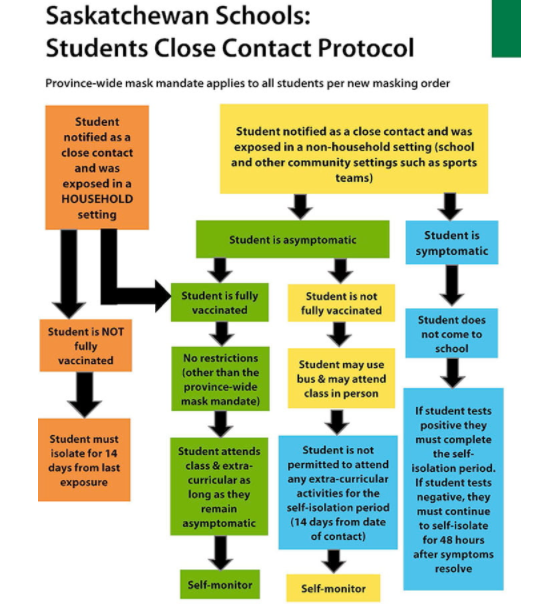HUMBOLDT — COVID-19 numbers were a topic of discussion for trustees of the Horizon School Division in their October board meeting as COVID-19 numbers continue to rise among elementary and middle school students.
“The vast majority of the people in our system are children under Grade 9 and many in the elementary, so between Kindergarten and Grade 6,” said Kevin Garinger, Horizon’s director of education. “We will certainly communicate in every situation with the parents impacted, the schools impacted and our board.”
Garinger said the high numbers of younger students being impacted is a contrast from last year, which saw older students infected.
“That’s the nature of this variant is it impacts our children, it’s more transmissible, where in the past we’ve had very little transmission in our children – now this variant is impacting them in a different way. All that we can do to try to protect them and prevent any transmission in our schools as well as protecting our staff and our families is our mandate.”
At this time, children under 12 years are not eligible to be vaccinated against COVID-19 in Canada, although the provincial government has stated that news on clinical trials in this age group is encouraging, and that the province will move quickly to provide COVID-19 vaccine to additional age groups as soon as any vaccine receives Health Canada approvals.
Garinger estimated on Oct. 13 that about 60-70 per cent of the cases within the Division were Grade 6 and under.
“We had four new cases today and they’re all Grade 6 and under in one school,” he said, adding that as a result extracurricular activities were halted at the school.
In a September review of more than 1,600 COVID-19 cases throughout Saskatchewan, the province found 98 per cent of school-aged cases lived in unimmunized or partly immunized households.
The review included 1,643 confirmed cases of all ages between Aug. 20 and Sept. 7. Among the cases, 334 school age children (six to 19 years) were identified, the majority of this group (189 cases or 56.5 per cent) were six to 12 years of age. Through the provincial case identification, it was determined two of the households were fully immunized, while 78 households were unimmunized or partly immunized.
Based on the Public Health Order, students who are close contacts and are vaccinated may return to both in-class learning and extracurricular activity as long as they are asymptomatic.
Students who are close contacts in a classroom and are unvaccinated will be able to return to in-class learning but are not eligible for any extracurricular activities until Public Health determines they are no longer a close contact.
Students who are unvaccinated and that are close contacts due to an exposure in the household may not return to in-class learning or extracurricular activity until they are no longer deemed a close contact.
Garinger said the transition to learning from home for exposed students is going as smoothly as possible, with students able to take home laptops and devices emitting a Wi-Fi signal if they don’t otherwise have access.
“Nothing is ever as good as having your children in front of you, but our staff do an amazing job of doing the best they can given the circumstances they’re in. It happens quite quickly, in a day they get all the resources families need and the next step is them moving the children to a virtual environment for learning.”
Within the Horizon School Division, beginning mid to late October all individual staff, contractors and volunteers with the Horizon School Division will be required to demonstrate proof of vaccination or a weekly negative test result.
Two staff members have been infected over the last month, each case from a different school within the division. In one case, Garinger said he was told that Occupational Health and Safety were confident it never passed on to any students – the other remains under investigation by Occupational Health and Safety as per protocol.




